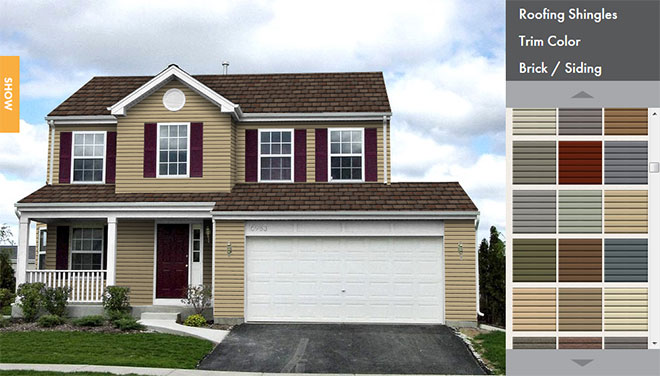Minneapolis MN Roofing Contractors | MN Roofer Minneapolis MN
Repairing & Replacing Asphalt Shingle Roofs Minneapolis MN
Asphalt shingles were introduced into the roofing market in the late-1800s as a by-product of making tar and asphalt-impregnated felts for flat roofs. Early shingles contained up to 33 percent cotton or wool fibers derived from rags, hence the term “rag felt.”
From the early 1940s to the late 1970s asphalt shingle mat was comprised of organic cellulose fibers derived from recycled waste paper and/ or wood fiber. Although organic mat is still available, the dominant base material since the late 1970s has been inorganic (fiberglass) mat. According to recent sales information from the Asphalt Roofing Manufacturing Association (ARMA), fiberglass mat shingles comprise approximately 82 percent of the residential asphalt shingle roofing market, and organic mat shingles (still popular in the Midwest and Northeast because they are more flexible and considered easier to install in cold weather) 18 percent.
ARMA estimates that asphalt shingles represent 80 to 85 percent of the total residential roofing market. The fiberglass mat typically used in the asphalt shingle industry is lighter than organic mat. Fiberglass mat doesn’t necessarily perform better but does allow shingles to meet Class A fire resistance ratings, while organic mat only meets Class C.
Organic mat is presaturated with asphalt and then coated with a mineral-stabilized material (limestone, slate, flyash, or traprock). Inorganic (fiberglass) mat is coated with mineral-stabilized material but not presaturated. The mineral-stabilized coating fills the voids between individual mats while at the same time providing increased resistance to fire and weather.
The typical asphalt shingle has been for many years a 36 by 12-inch three-tab strip shingle. The cut-outs between the tabs create the illusion of individual shingles.
Within the last five or ten years, “Architectural” or laminated shingles that simulate wood and slate shingles or shakes have become increasingly popular for higher end housing. These shingles are made of two or even three layers laminated into a single unit. The multiple laminate reinforces the impression of individual shingles and the protective granules are toned to simulate weathered material. Dark colored granules are added to create the impression of shadows, thereby enhancing the three-dimensional, “high definition” effect.
Dark colored granules are also added to some three-tab shingles, such as Owens Corning’s Prominence(r) series to simulate the appearance of premium shingles.
Other recent developments include the increasing use of larger-sized “metric” shingles, longer “multi-tabbed” shingles, and distinctly-styled, non-rectangular, diamond and hexagonal (scalloped) shingles.
The proliferation of different asphalt roofing shingle types and styles has made the selection of these materials difficult. In the recent past shingles were categorized by weight, such as 235, 240, 280 pounds, etc. The weight was generally related to service life. Currently shingles are classified by warranty duration, such as 20, 25, 30, or 40-year.
There is no direct relationship between base mat thickness, shingle weight, performance, and warranty. Furthermore, asphalt coatings, the type of fillers, mat thickness, and shingle weight vary from one manufacturer to another, making it difficult to estimate relative performance.
Most of the laminated shingles have been on the market for only the past five to ten years, and there is no long-term history of their performance (the Insurance Institute for Property Loss Prevention assumes that the effective life of an average asphalt shingle is 17 years). There is also no applicable American Society for Testing Materials (ASTM) accelerated wear test that is appropriate for asphalt shingles.
Manufacturer warranties are apt to differ in terms of what is warranted (material, labor, or both), against what defect, for what period (pro-rated or not), with what exclusions (rain, hail, and other variables), or whether the warranty is transferrable.
In response to widespread reports of product failure in the early 1990s, the Midwest Roofing Contractors Association (MRCA) ran shear strength tests on a number of shingle types (asphalt fiberglass, asphalt organic, asphalt laminated fiberglass, and asphalt laminated organic shingles) in accordance with Section 8.1.2 of ASTM D3462, “Standard Specification for Asphalt Shingles Made from Glass Felt and Surfaced with Mineral Granules.” All but two of the 20-to 25-year warranted three-tab asphalt fiberglass shingles, and all of the 25-and 30-year warranted asphalt laminated fiberglass shingles failed to meet the test.
The ARMA maintains that tensile strength, tensile elongation, and shingle flexibility are better indicators of potential resistance to shingle splitting than tear strength, and is working through ASTM to improve the D3462 standard to more accurately reflect shingle performance. ARMA maintains that some shingles that don’t meet D3462 perform adequately.
Most manufacturers currently produce shingles that meet ASTM D3462, and this standard is increasingly referenced by model code agencies. However, some manufacturers, responding to requests for inexpensive products, make “commodity” 20-and 30-year shingles that do not meet this standard. These shingles, of varying quality, are often sold through discount wholesale and retail outlets stores that supply very price sensitive markets.
Until the standards are revised, MRCA and some other industry representatives recommend purchasing organic or fiberglass shingles that are certified as meeting the tear-strength requirements of ASTM D3462. A recent development in asphalt shingles is algae-retardant surfacing. Manufacturers have in the past experimented with zinc granules to retard algae growth, but these sometimes resulted in white patches and uneven staining.
The industry and some regional standards recommend doubling up on weight of shingle underlayments, using polymer-modified asphalt underlayment membranes (such as Ice & Water Shield TM or WinterGuard TM ) instead of, or in addition to, roofing felts, and increasing the nailing pattern from 4 to 6 per shingle and the nail size to 1-1 /4-inch #12 nails with 3 /8-inch head diameter.
Shingles at roof boundaries such as rakes, ridges, hips, and valleys should be secured with hand tabbing of an asphaltic roof cement. Existing shingles should be removed prior to reroofing and the existing sheathing inspected for deterioration. Some municipalities have special requirements, such as allowing only shingles that pass 110 mph testing (but which are not typically warranted by manufacturers beyond 80 mph).
Partly in response to cold temperature and high-wind performance requirements, some manufacturers produce shingles derived from recent flat roof technology developments, with different base mat materials and configurations, as well as modified asphalt formula.
Repair Existing Asphalt Shingles
Isolated small holes or cracks in shingles can be temporarily repaired by troweling on plastic roofing cement. Curled shingles can often be cemented back in place. Individual shingles that are badly damaged can be replaced by slipping a pry bar under the damaged shingle, removing the nails, sliding the shingle out, replacing the shingle, and applying roofing cement to the new nail heads and the bottom edge of the new shingle, and the one above.
If a large number of shingles exhibit excessive drying out, curling, loss of protective granules, cracking, or other deterioration, or if there is evidence of significant leaks that are not due to faulty flashing, then a complete shingle replacement is likely to be required.
- ADVANTAGES: Repairs are easy to make and are cost-effective over small areas.
- DISADVANTAGES: If large areas need replacement, or if serious leaks develop, postponing replacement may cause damage to the building’s structural elements or finishes.
Installing New Asphalt Shingles
A critical decision will be whether or not to remove the existing shingles or apply the new shingles over the existing layer.
According to ARMA, in many cases it is not necessary to tear off the old shingles if the roof has only one layer of shingles, is laying flat and the decking is in good condition. In this instance, the existing asphalt shingles can provide a secondary moisture barrier and the cost of removing and disposing of the old shingles will be eliminated.
The existing shingles will probably have to be removed, however, if an inspection of the roof sheathing/ substrate reveals significant rotting or warping of sheathing members, if there is more than one existing layer of asphalt shingles on the roof, if the roof structure shows signs of sagging along the ridge or truss lines, or if the condition of the existing shingles is so rough and distorted that new roof shingles would not lay flat.
If the roof does not look straight and feel solid, it should be inspected for structural adequacy by a professional engineer or architect. The advice of an experienced roofing contractor can assist in the determination of the appropriate installations. If there is any serious doubt, a complete removal will lead to the most satisfactory application, as it allows a complete assessment of the condition of the existing roof and will provide the base for a level and flat installation. In any case, adequate roof ventilation should be provided.
Ideally, asphalt shingles should be installed only when the temperature ranges between 40 F and 85F. At temperatures lower than 40F shingles become brittle, crack easily, and are hard to cut. At ground-level temperatures of 85 F and above, roof temperatures can be in the mid-100s and the granular material is easily disfigured and scuffed by handling and walking on the roof’s surface.
In hot climates, roofers usually begin work at day-break and quit early. In colder climates during the winter, the seal tab adhesives may not set up initially, especially on light, reflective roofs.
Seal tabs may also not set up properly on very steep roofs with slopes over 21 on 12. These installations often require additional applications of roofing cement (see “Further Reading” for cold weather and high slope application recommendations).
Application procedures are critical: incorrect nailing above the seal tab line or over-driven nails can lead to product failure. Shingle manufacturers and ARMA recommend against directly applying asphalt shingles on insulation or radiant barrier decks.
- ADVANTAGES: Available in a wide range of types, colors, and patterns, asphalt shingles are by far the most popular residential roofing material. Under most conditions asphalt shingles perform satisfactorily. Laminated shingles can dramatically enhance the building’s appearance, especially those with higher roof pitches. Can be applied over one layer of flat existing asphalt shingles, but reroofing directly over sheathing is best. Relatively economical material with low first costs, compared to other materials. Easily installed.
Hire A Minnesota GAF Master Elite Residential Roofing Contractor
For more peace of mind, hire a factory trained and certified GAF Master Elite residential roofing contractor.
Because of GAF’s stringent standards, only the top 3% of all roofing contractors have qualified as Master Elite™ contractors! Choosing a GAF Master Elite roofing contractor is your assurance that you’ll be dealing with a quality, reputable, and dependable professional contractor — not some “fly-by-nighter.”
After all, a warranty is only as good as the manufacturer that stands behind it. With a GAF roof, you know that you will be covered throughout the warranty period—without fail! Ask us about which warranty option would be right for your home.


 Click Here
Click Here Click Here To Use
Click Here To Use